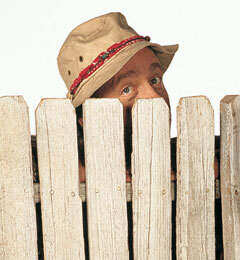
Lawrence Coburn of The Next Web wrote yesterday about “The Unlit Social Graph”. It’s a well-framed article and worth a read. Coburn’s premise is that Facebook, despite its pervasiveness and dominance, does not represent the only type of social graph in our lives. There are many other networks out there but they currently lie dormant. Tremendous opportunity exists for startups that can “light up” these networks: “Every school is a network, every employer is a network, every bar is a network, every office building is a network, every hobby is a network, every neighborhood is a network, and at an extreme level, every shared interest is a network, regardless of location.”
John Battelle adds: “…we are on the precipice of entirely new ways of thinking about our relationship to others as leveraged over digital platforms, and while Facebook may well be the oxygen or the landmass of this ecosystem, it won’t be the entire ecosystem itself.'
Embedded in these statements is a fundamental truth: that not every social connection is equal. Certainly, very few of our social connections truly qualify as “friendship” – at least in the way we formerly used the term. And yet our recent habit has been to paint them all with the same broad stroke.
Relationships are shaped by the context in which they exist. Neighborhoods are a great example, wherein the context is a very special location – my home. While we have much to gain from being connected to our neighbors and our neighborhood, we don’t always want to be “friends” with our neighbors. That’s because we can’t easily escape these relationships once they have been created. As a result we now live in a time where most people don’t know their neighbors names. We are living together, yet alone. This is a problem that can’t be solved by a social graph of friends.
The good news is that both culture and industry are waking up to the differences between these social graphs and the opportunities they present. I believe that we are entering a new era that I (with tongue in cheek) call the “post-friend economy”.
Facebook isn’t going anywhere, of course. But in this world, Facebook’s social graph is one of many we interact with. Instead of seeing every relationship in the context of “friendship”, we use tools that more accurately reflect the diversity of relationships we maintain in the real world.
These tools work in a way that makes sense for the context. That means many different levels of personal identity, sharing, and conversation. It means networks created around places, affinity, and time. And perhaps most importantly, it means the ability to unplug and “erase” ourselves from these networks as our own context changes (e.g. when I move to a new neighborhood, when I tire of playing basketball, or when a concert is over).
At Blockboard we see ourselves as a post-friend application, one that is focused on the problem of activating neighborhood networks. This is just one of the hundreds of latent graphs that will be activated over the next few years. Things are going to get interesting.